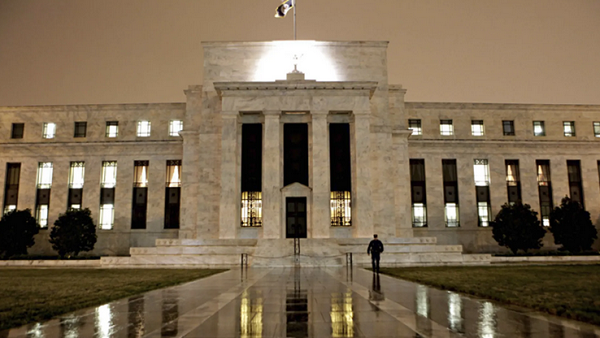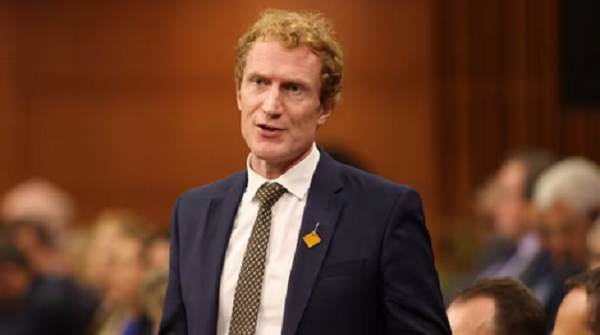Federal Reserve expected to cut rates markets divided on big or small move
The U.S. Federal Reserve is expected to lower interest rates for the first time in four years on Wednesday, kicking off a long-awaited easing cycle and setting the tone for global financial markets heading into the fall.
The key question is whether the world’s most important central bank will deliver a normal quarter-point rate cut, or opt for a larger move as inflation retreats and the United States’ remarkably resilient economy loses steam.
In the past, oversized cuts have typically been prompted by financial-market turmoil or fears of a recession – neither of which are especially evident right now. Fed policy-makers may also be wary of acting too forcefully, lest they’re accused of political interference ahead of the November presidential election.
Still, financial markets put the odds of a half-point rate cut at around 50 per cent on Friday, up significantly from bets earlier in the week.
“I certainly think they will debate it. A lot of easing cycles actually have started with a pretty big 50-basis-point move,” Douglas Porter, chief economist at Bank of Montreal, said in an interview. (A basis-point is 1/100th of a percentage point.)
“But I would still lean marginally to a quarter-point cut. I think they still need to be a little bit cautious given the inflation backdrop. And while they’ve had a bit of a deterioration in the unemployment rate, it’s not in the same league as what we’ve seen in Canada.”
The Federal Open Market Committee (FOMC), led by chair Jerome Powell, has kept the target for the benchmark Federal Funds Rate at 5.25 per cent to 5.5 cent since last summer, while most other central banks, including the Bank of Canada, have started to cut.
That reflects the relative strength of the U.S. economy, where consumer spending, business investment and employment have all held up in the face of the high borrowing costs. Inflation, in turn, has proved more stubborn in the U.S. than in most other countries.
In recent months, however, the Fed’s highly restrictive interest rates have looked increasingly inappropriate. Consumer Price Index inflation, which peaked at 9.1 per cent in 2022, was running at just 2.5 per cent in August. Meanwhile, there have been worrying signals from the labour market, where job creation has slowed and the unemployment rate hit a three-year high over the summer.
So far, the Fed looks to have achieved the rare feat of corralling runaway price growth without causing a recession. But this “soft landing” could be in jeopardy if it waits much longer to start easing monetary policy or moves too slowly to bring interest rates back to more normal levels.
“I don’t think many people would question their wisdom if they did decide to go 50 basis points; it’s fairly clear that rates don’t need to be this restrictive any more,” Mr. Porter said. “It may well come down to the fact that the Fed does not want to signal some kind of undue concern about the outlook, which I think some would take away if they went by 50.”
The interest-rate decision is also fraught politically. Republican presidential nominee Donald Trump has made economic weakness a major theme of his campaign, and has long criticized the Fed. If the central bank front-loaded its easing cycle, it would almost certainly draw accusations of political interference from Mr. Trump and the Republican Party.
Mr. Powell has said the Fed’s decisions aren’t swayed by political calculations, and central banks guard their independence fiercely. But central bankers do think about how their actions might be perceived, said Lawrence Schembri, a former deputy governor at the Bank of Canada and a senior fellow at the Fraser Institute.
“Clearly central banks want to do the right thing for the economy. But there is a sort of sensitivity about influencing political outcomes. They don’t want to be seen picking sides,” Mr. Schembri said in an interview.
The Bank of Canada will be watching the Fed’s decision closely. U.S. interest rates influence bond yields and financial conditions on this side of the b
order, and an oversized cut from the Fed would likely strengthen the Canadian dollar against the U.S. currency.

A big cut could also encourage the Bank of Canada to pick up its own pace of rate cuts, Mr. Schembri said: “If it’s 50, and clearly is a signal that things are slowing much faster than expected [in the U.S. economy], then that actually gives the Bank of Canada room to move faster too.”
What Mr. Powell and his colleagues say on Wednesday will be almost as important as what they actually do. Bond yields, which underpin fixed-rate mortgages and other types of borrowing, are influenced by where investors think the central-bank overnight rate will be in the future. That means central bankers can nudge borrowing costs up or down by sending signals about their expectations and intentions.
The Fed will publish a “dot plot” on Wednesday, where FOMC members write down where they expect the Fed Funds Rate to be over the next three years and in the longer run. But a lot of the heavy lifting will be done by Mr. Powell in his news conference after the rate announcement.
“He’s probably going to try and stay down the middle with a dovish lean,” said Michael Reid, U.S. economist with RBC Capital Markets. “I think they will want to say, ‘Look, we’re going to set a pace here of 25 basis points, and if it’s necessary we could go 50.’ ”
This article was first reported by The Globe and Mail












